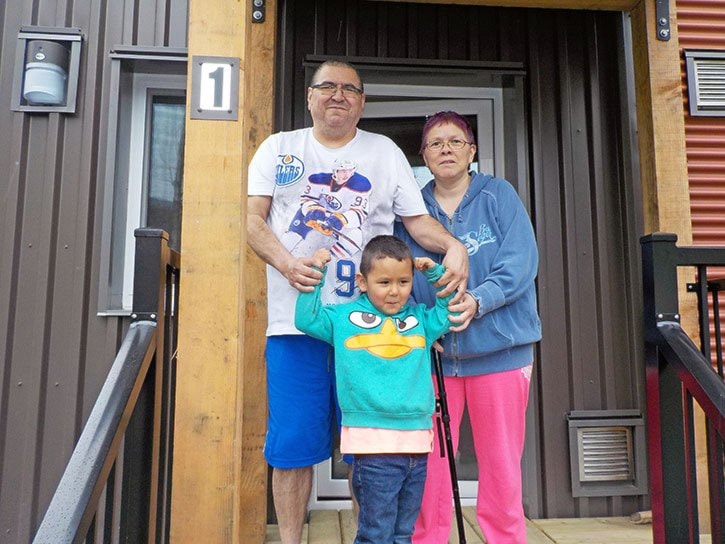Pat Giroux is 46 years old and a member of the Yale First Nation who has never lived on his traditional lands — until April 1.
Finally, on April Fools Day, Giroux and his family got the keys to their new house at Ruby Creek.
“It's new to us and it's quiet,” said Giroux. “You don't really hear the traffic, you don't hear the train too much.”
Giroux was among the 12 tenants who moved into the six-plex, two-bedroom, two-storey passive houses on March 31 and April 1.
Passive houses denote a building standard which ensures a high level of energy efficiency such as by ensuring airtightness, alignment with the sun, recycling heated air from stove and dryer vents.
Giroux used to live in Agassiz, in an older house, and he could tell the difference between his two residences.
“It was quite cold all the time,” said Giroux.
“And right now, we've been in there this week and we only had the heat on the first day when we moved in because it was so cold at night.”
If predictions are right, Giroux can expect a hydro bill costing less than $20.
Yale First Nation Chief Ken Hansen highlighted that high hydro bills contributed to the decision to building passive houses instead of conventional stick-built construction.
However, the decision to build houses, passive or otherwise, came down to issues identified in their community comprehensive plan, which included housing and “coming back home” as priorities.
Housing and repatriation are intertwined. Some members live in neighbouring communities, in other provinces or Vancouver's Downtown Eastside because they never had the opportunity to return to their lands.
According to housing manager Crystal Sedore, 27 members have returned to their lands after a push to renovate and create new housing. “Almost doubling the number of our on reserve members from 2014,” she said.
Asked what the housing situation on traditional Yale lands looks like, Hansen said “it's a sensitive subject.”
“I don't like pointing fingers at past leadership, I think we all learned, but there's a long outstanding [need] for housing in Yale First Nation,” said Hansen. “This was identified, we have people on the housing list for over 20 years and I think it's evidence that housing is possible on reserves if you have the proper leadership and you have the proper management in place and proper financial records to deliver housing on reserve.
“A good indication of what was going wrong was there was only three houses built in the last 30 years.”
Now that people have moved in, Hansen wants to build community. He recognizes that people will go through a change from living in urban centres and moving to a “secluded, First Nation Indian reserve” life. He also recognizes that some of these members want to learn about their culture.
“What I really want to do is to create a space for those people that are coming home to self-identify and really find out who they are,” said Hansen. “Provide that opportunity through whatever cultural ceremonies they wish to perform.”
Hansen also believes homes create an environment for healing through building community. He elaborated that many families rarely meet their relatives because of distance.
“When we have large community meetings and community conferences, we do them every three or four months, sometimes this is the only time our people can actually visit their [relatives] because of mobility challenges and pure distance,” said Hansen. “We make sure everyone has an opportunity to get to the meeting and it's always a really nice time, like a family reunion.”
Going forward, Sedore said Yale First Nation will build another four-plex in Dogwood Valley.
While calculating how many houses were built is a matter of numbers, asked how Hansen will gauge the success of his community building plan, he said a marker of success would lie in its members participating as a community.
This includes giving feedback to the government, participating in cultural ceremonies or using their services.
With the installation of the passive houses, Yale First Nation might have sparked something bigger among First Nations.
“It's my understanding that these are the very first passive houses on Indian reserves in Canada,” said Hansen. “And it also my understanding that other First Nations now have been speaking to Britco and going to be doing passive house development on their reserves as well.”
